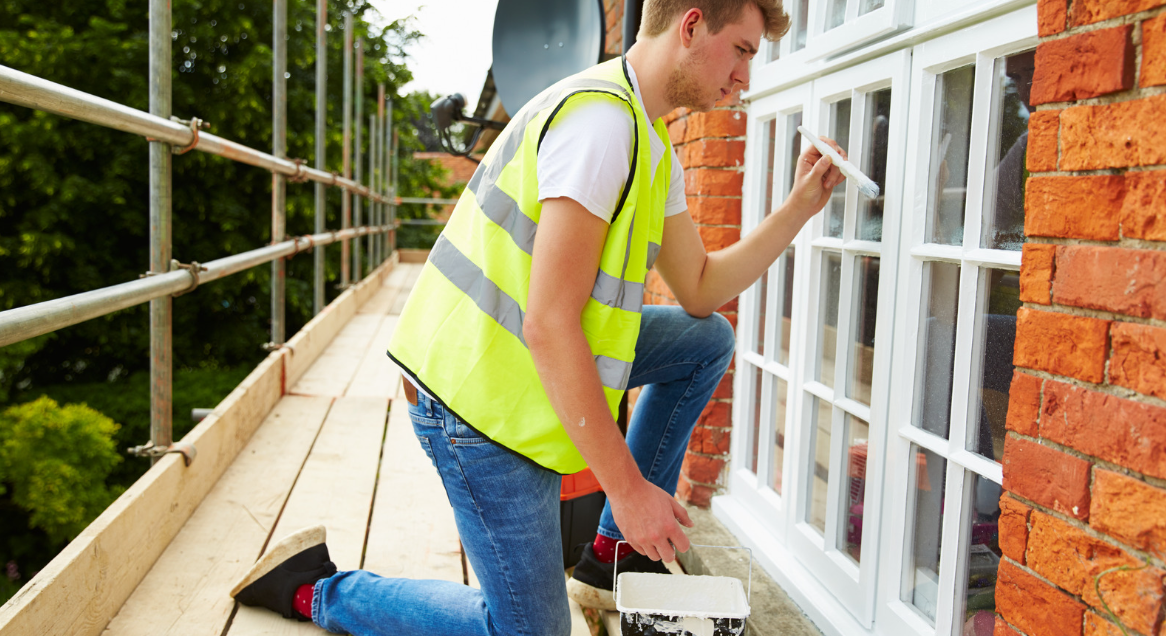
Most Common Painting Injuries and How to Prevent Them
Posted on September 12, 2023
It’s a beautiful day, and you have your painting gear all set up for fun and creativity. However, painting is no child’s play. While it can be a fulfilling hobby or a source of income, it also comes with risks. One slight mistake can lead to nasty injuries that can ruin your mood for the rest of the day or weeks. To save you from such unpleasant experiences, we have compiled the most common painting injuries and how to prevent them. If you have a painting project to do with any potentially dangerous elements in the Milwaukee area, contact us to have a professional crew come complete the job.
Why Do Injuries Happen To Painters?
Painting involves a lot of physical activity, such as stretching, bending, and carrying heavy objects. Painting also requires you to use various tools that can be dangerous if used incorrectly. Sharp edges and the chemicals in paint can cause injuries if not handled with caution. All this puts the painter at risk of physical injury while painting.
Why Do Painters Need Safety Precautions?
Painting involves many moving parts, risky processes, and hazardous materials. All these increase the chances of an accident that could lead to major injuries such as cuts, burns, or even poisoning. This is why painters must take proper safety precautions before starting their projects.
Common Painting Injuries
Cuts and scratches:
Cuts and scratches can happen due to sharp edges of painting equipment, such as knives, scissors, or paper cutters. To avoid this kind of injury during painting, use safety scissors and blunt knives, and when handling blades, make sure you or those around you are aware of their locations. If you’re using a self-healing cutting mat, keep it clean and free from blades after each use.
Eye damage:
Eye damage is also a common painting injury due to the small particles of paint or dust that travel through the air while painting. While using paint or varnish, it’s essential to wear safety goggles. Ensure to keep windows open and ensure the work area is well-ventilated. If you own a spray booth to create art, keep the booth well-organized, and ensure the ventilation system is functioning well.
Scrapes and bruises:
Scrapes and bruises come as a result of slips and fall while painting. To prevent these injuries, consider wearing proper footwear and ensuring no frayed carpet edges, uncovered cords, or uneven floor surfaces in the work area. When choosing the appropriate footwear, ensure they have a non-slip sole and proper ankle support.
Inhalation of fumes:
Inhaling fumes can cause dizziness, headaches, and nausea. If you’re using products that emit fumes, such as varnishes, thinners, or spray paints, performing the task in a well-ventilated area is essential. Alternatively, you could operate mechanical ventilation that exhausts fumes to the outside, wear a respirator, or use an air-purifying respirator.
Back and shoulder strain:
Long hours of painting can cause back and shoulder strain. To prevent this, it is essential to use an ergonomic paint brush and standing products. Always make sure that the easel is at the optimal height and that your canvas or paper is at a comfortable angle. Take frequent breaks to stretch or walk around, and consider using a chair with proper back support.
Skin burns and irritation
Getting paint on your skin may not seem like a big deal, but it can cause skin irritation and burns. Paint has chemicals and other harmful substances that can harm your skin.
Wear long-sleeved shirts, pants, and gloves to protect your skin while painting.
Frequently Asked Questions
Do I need safety goggles when using oil paints?
Yes. Oil paints contain chemicals that can irritate your eyes if exposed. Therefore, it is necessary to wear safety goggles when using oil paints. Additionally, keep your work area well-ventilated and free from dust particles.
What is the best way to clean paint off my skin?
Wash your hands and any other affected area with soap and warm water. If the paint does not come off easily, you may need a mild abrasive cleaner or mineral spirits. Please take caution when using these cleaning agents; they can be harsh on your skin and irritate. Additionally, make sure to wear gloves when handling paints in the future.
Are there special safety precautions for spray painting?
Yes. When spray painting, working in a well-ventilated area and wearing a respirator covering your nose and mouth is important. Also, avoid spraying paint directly onto yourself or anyone else nearby, as the chemicals from the paint can cause serious health complications. Lastly, keep all spray cans away from children and pets.
Is there anything else I should consider when painting?
Yes. Consider wearing comfortable clothes free from tight cuffs and drawstrings, as these can get in the way of your painting tasks. Additionally, wear proper footwear with non-slip soles for extra protection. Lastly, take frequent breaks while working on a long-term project so as not to strain yourself too much physically.
Conclusion:
Painting is a relaxing and fun way to channel creativity, but it can also be a source of injuries. Simple precautions can prevent these injuries. Remember to wear the appropriate protective gear, always keep the work area clean and well-lit, and follow the guidelines of each type of product you work with. A safe work environment can lead to stress-free painting sessions, resulting in better art and a happier experience. We offer professional painting services for the greater Milwaukee, WI service area, contact us to set up a free estimate appointment.





